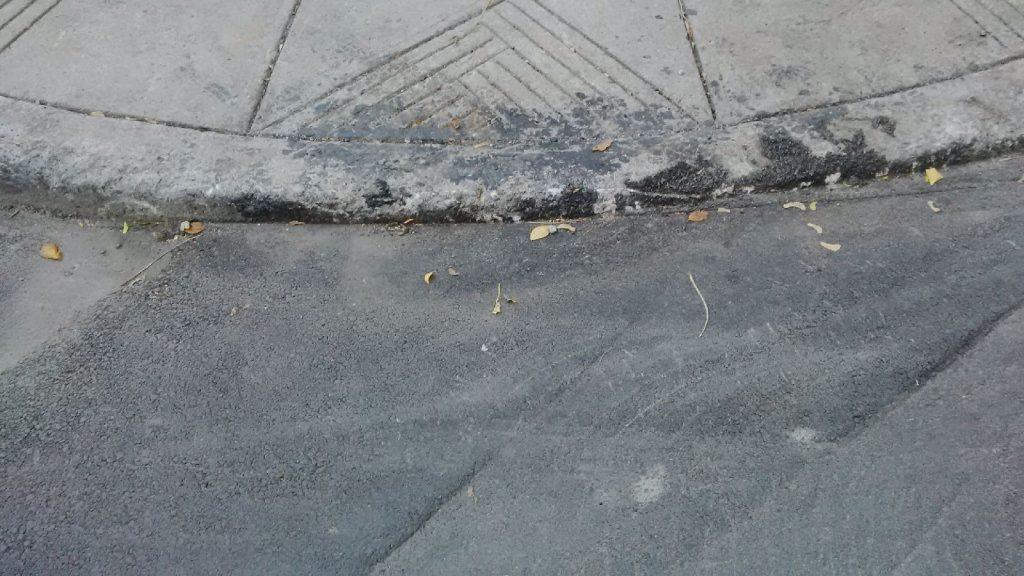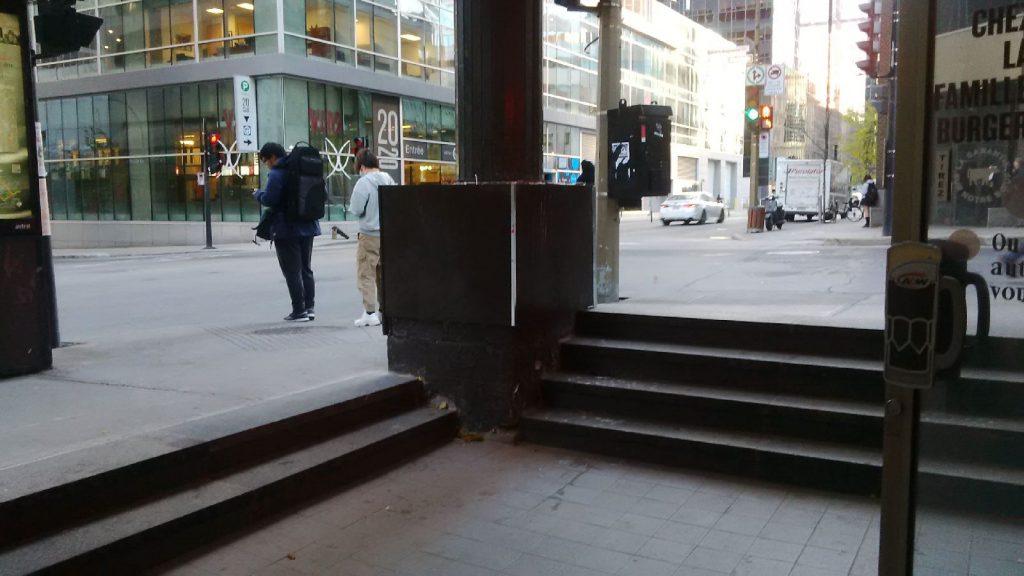Cet article a été soumis dans le cadre du projet Journalisme Citoyen de la Table de quartier Peter-McGill. Veuillez noter que les opinions exprimées dans ces articles ne reflètent pas nécessairement celles de la Table. Le projet vise à faire entendre les voix des résident.e.s et ami.e.s du quartier par des soumissions d’articles, de photos, de vidéos et de balados. Intéressé.e à contribuer? Contactez-nous au benevolat@petermcgill.org!

We need to talk about accessibility for people with reduced mobility. On a scale from 1 to 10, how many of us are aware of the challenges and what seems like little details that prevent people with reduced mobility to enjoy every day tasks like going for a cup of coffee at the corner of the street or simply crossing the street safely at the corner?
My father, 75, needs a wheelchair when outside after a complicated cervical surgery in 2013 that left him with reduced mobility in his legs. On October 22, while running errands on the Plateau, he was hit from behind by a car somewhere on Avenue Mont-Royal. The driver did not stop (maybe did not see my father) and luckily my father and the wheelchair remained straight. But he did end up at the emergency for a couple of hours with a deep cut on a leg, a small cut on the head… and major repairs to his wheelchair were required. The thing is, he was at the corner of a street waiting for the light to turn green but… he was in the street, not on the sidewalk, because the sidewalks in that area are crowded and crooked. So technically, this incident was his fault… but what choices do people in wheelchairs sometimes have given the state of our sidewalks?
And yes, this happened in another borough, but it could’ve easily happened here in Peter-McGill. Below is a picture on the corner of Mansfield and Président-Kennedy. Look at the height between the sidewalk and the street. I’ve often seen people in wheelchairs circulating in the street in that area. Can we blame them? Continuing on the topic of sidewalks, what about when there’s construction nearby and signposts are installed right in the middle of the sidewalk, blocking the access to people in wheelchairs?

Let’s now reflect on accessibility. Since my father’s been in a wheelchair, whenever he needs to go somewhere for the first time, I always go check out the premises and nearby area the day before to ensure it is wheelchair accessible. For example, this summer he was coming downtown to shop for a new desk. I suggested we go to the Canadian Tire at Place Alexis Nihon. The day before I realized the main elevator was out of order so I made sure there was a plan B – and there was – a back elevator was made available – phew! But we could not go to Bureau en Gros across the street on St-Catherine St. because the desks are on the second floor of the store and there’s only a mechanical stair to take customers there!
A few weeks ago, he also had an appointment at 2020 University, the building on Président-Kennedy and boul. Robert-Bourassa. I told him we could meet for coffee after his appointment. But I walked for an hour in that area and was not able to find an accessible spot. Luckily, we ran out of time for coffee. I was relieved that he was not going to go through that disappointment.

As I was preparing this article, I found this interesting information on the website of Québec Accessible:
“Did you know that Quebec was one of the first provinces in Canada to adopt a law promoting the inclusion of people with disabilities? The Quebec government adopted the Act to secure handicapped persons in the exercise of their rights in 1978. Quebec’s current law lacks teeth. Unlike laws in other provinces and countries, it only applies to the public sector (ministries, government agencies and municipalities), and it has no clear goals or penalties to ensure compliance.”
That is indeed a big gap that this legislation applies to the public sector only. People with reduced mobility have the right to enjoy everyday pleasures like going for a cup of coffee at the new coffee shop around the corner.

I love the work of the StopGap Foundation which began with the launch of its first Community Ramp Project in Toronto’s Junction neighbourhood. Through building materials donated by local hardware brightly coloured ramps are installed to close the gap that exists between sidewalks and elevated storefronts. Wouldn’t it be nice to see something similar in Montreal?